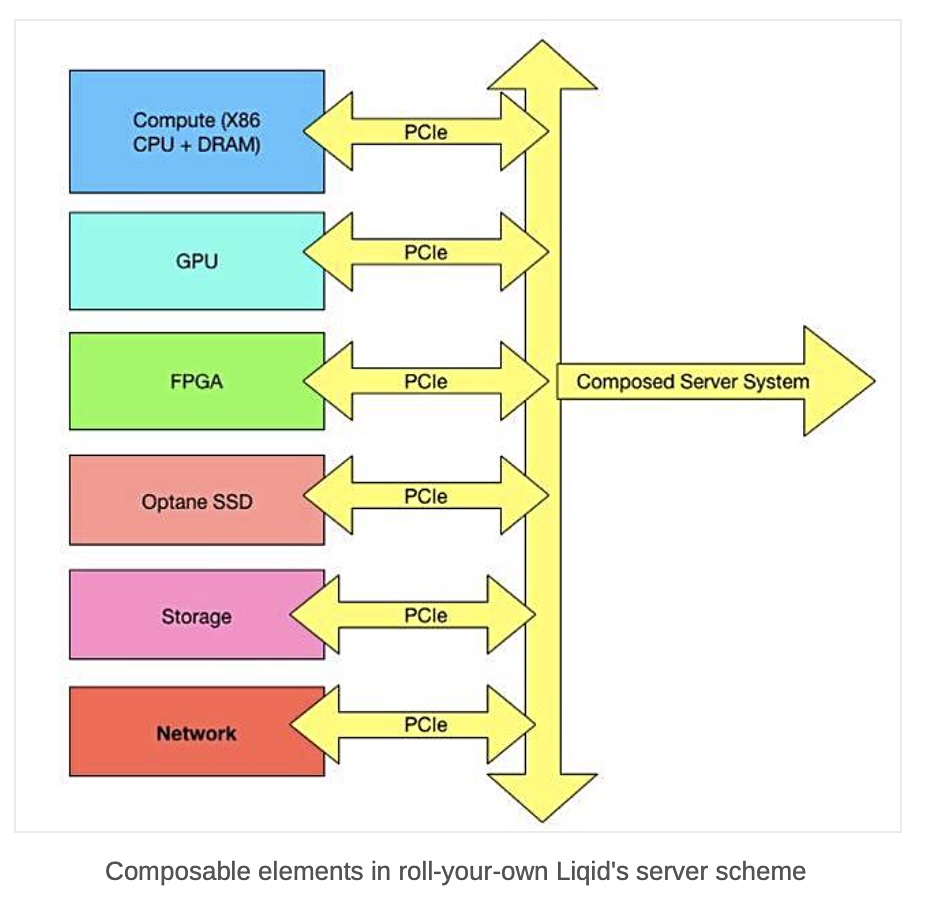Dell is adding GPUs, FPGAs and NVMe storage to the MX7000 composable system via a deal with Liqid. This makes the MX7000 systems better suited for data-intensive applications such as AI, machine learning and low-latency analytics.
Dell indirectly announced the hookup with Liqid, a software-defined composable infrastructure vendor, via a reference architecture document published on August 7.
We think all composable systems suppliers will need to support NVMe fabrics and PCIe, in order to bring Nvidia’s GPU Direct into their systems.
NVMe is on its way to becoming the dominant composable systems fabric and SSD storage access protocol, in Ethernet and PCIe fabric incarnations. Today, most composable systems suppliers favour Ethernet as their control plane fabric. However, Nvidia GPU Direct bypasses the CPU to load data direct from NVMe storage into the GPUs across a PCIe bus.
MX7000
Composable systems dynamically build servers from pools of disaggregated compute, storage and networking elements using control plane software, with some having dedicated chassis to house the components. When the composed server is no longer needed its components are returned to the resource pools for re-use.
The MX7000 organises component resources across an Ethernet fabric and via Fibre Channel, but GPUs typically need a PCIe bus connection with NVMe to get data to the GPUs.
Dell has worked with Liqid to add a PCIe expansion chassis to its MX7000 and this houses up to 20 full height, full length GPUs or devices such as FPGAs and NVMe storage.

PCIe gen 3 4-lane adapters link the MX7000 compute sled to the Liqid PCIe expansion chassis. The Dell document states: “Once PCIe devices are connected to the MX7000, Liqid Command Center software enables the dynamic allocation of GPUs to MX compute sleds at the bare metal (GPU hot- plug supported). Any amount of resources can be added to the compute sleds, via Liqid Command Center (GUI) or RESTful API, in any ratio to meet the end user workload requirement.”

The MX7000 is managed by Dell’s OpenManage Enterprise Modular Edition (OME-M) software, which means there are two control planes.
Composable systems and NVMe
HPE Synergy is probably the most well-known composable system. The ProLiant servers used in Synergy can support direct-attached NVMe SSDs. However, the Synergy storage modules use SAS connectors, not NVMe, with SAS and SATA HDDs and SSDs supported.
Liqid has a partnership with Western Digital, which has its own OpenFlex composable systems line using chassis filled with disk drives or NVMe SSDs. Liqid can harness OpenFlex NVMe resources in systems it composes.
DriveScale, another composable systems supplier, uses Ethernet NVMe-over Fabrics via RoCE, TCP or iSCSI.
Fungible is set to join the composable systems supplier ranks later this year.






